I happen to like jellied cranberry sauce with Thanksgiving turkey. How does a native North American fruit end up like this?
It begins with this flower, the Large Cranberry (Vaccinium macrocarpon).
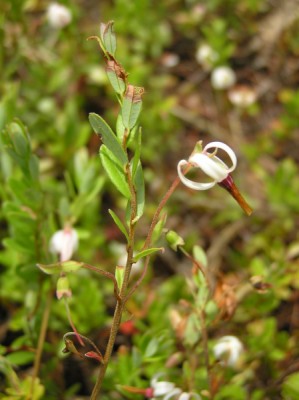
The plants are grown commercially in bogs completely surrounded by dikes. When the flower becomes a ripened fruit…
…the field is flooded for harvesting. Harvesting machines, nicknamed “eggbeaters,” knock the berries off the plants. The floating berries are corralled to a conveyor belt. (This Good Morning, America video shows the cranberry harvest on Cape Cod.)
After the harvest the berries look like this…
They have enough natural pectin that their juice jells on its own if it’s boiled with sugar.
So you could boil them in sugar, strain out the solids, pour the juice in a mold, chill it and voilà. You have the same jellied cranberry sauce but it doesn’t look like a can.
But really. I like the magic of a jiggling food shaped exactly like the can it slid from.
A natural fruit in an unnatural shape.
(photo of canned cranberry sauce by busbeytheelder, Creative Commons license. photo of cranberry flower by Dianne Machesney. All other photos from Wikimedia Commons. Click on the images to see their originals)
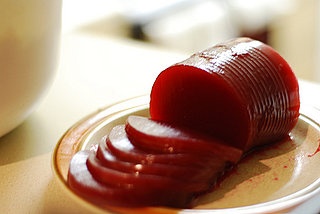
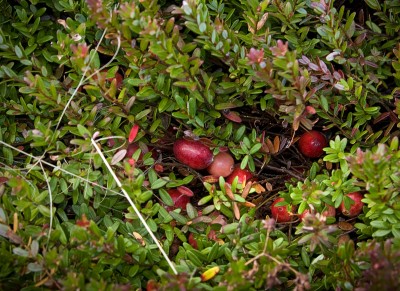
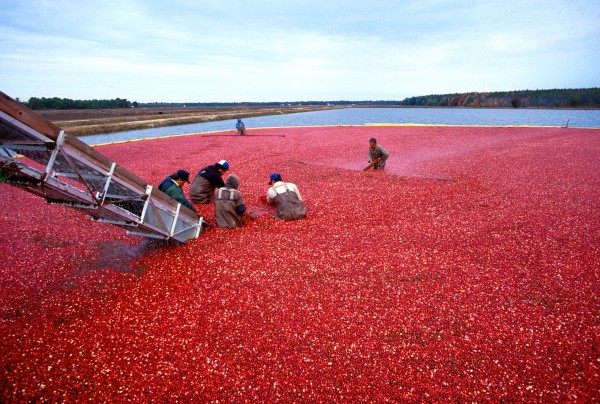
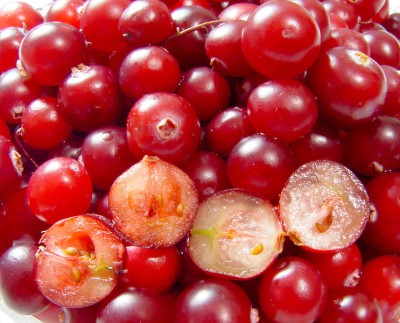
Very funny Kate! I like it too! Happy Thanksgiving!
To the humble, red, canned shaped product on my Thanksgiving table for the last 47 years, “I raise my glass to you.”
Happy Thanks giving everyone!!
Approximately 50- years ago, in a natural setting near North Bay, Ontario, I watched a
public cranberry harvest in Lake Nipissing. Very interesting, with the boats, nets,
seines, and such. I was taken with the popularity of the activity,almost like a public
celebration. Boatloads of berries left that bog., along with a lot of happy folks.
Although I can accept the canned jellied cranberry juice, I prefer the loose berries that can be frozen for a long time and cooked in 15 minutes. The cooked berries look like jewels and taste and feel fantastic in the mouth. What a lovely, beautiful, sensuous, healthy fruit.